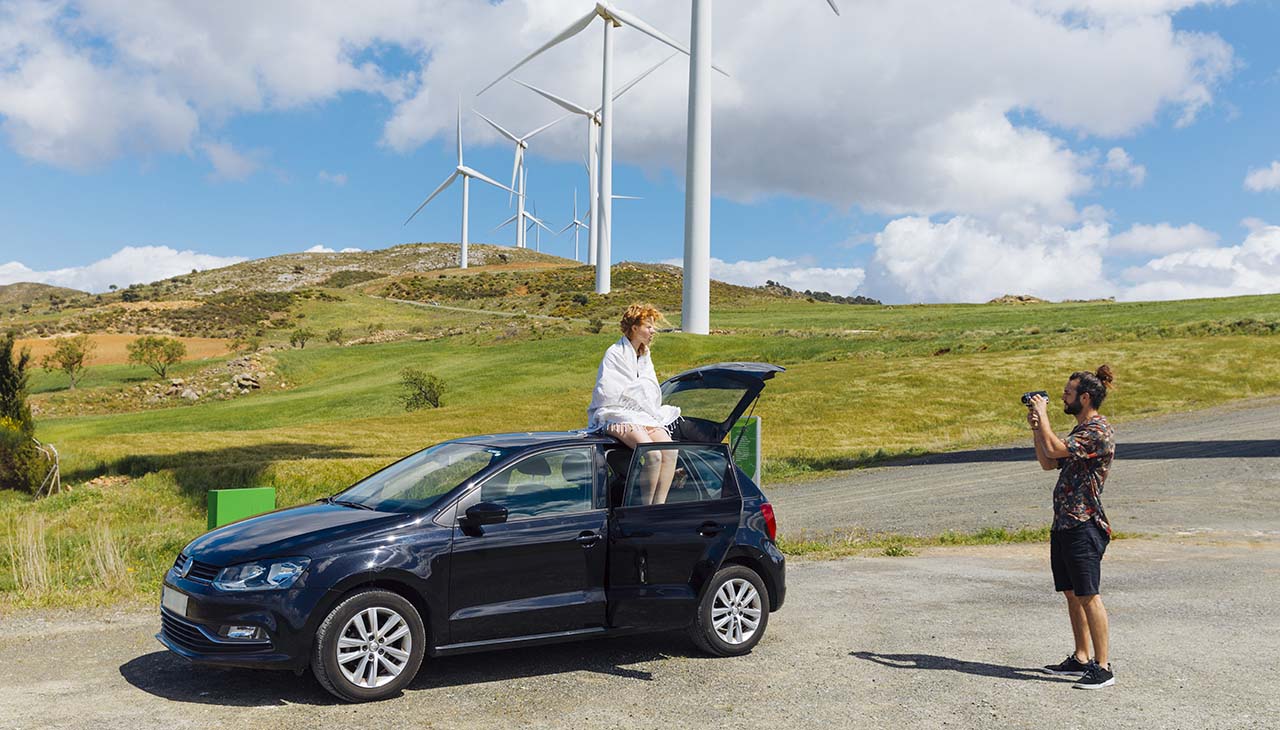In recent years, there has been a significant shift in consumer preferences towards more sustainable and environmentally friendly products, particularly in the automotive industry. This movement has not only been driven by a greater awareness of the environmental impact of traditional gasoline-powered vehicles but also by advancements in technology that have made eco-friendly vehicles more accessible and efficient. Transitioning to eco-friendly vehicles, such as electric cars, hybrids, and hydrogen fuel cell vehicles, represents a crucial step towards reducing greenhouse gas emissions, decreasing our reliance on fossil fuels, and paving the way for a more sustainable future. This document aims to explore the benefits, challenges, and potential of adopting eco-friendly vehicles, offering insights into how individuals and communities can contribute to a healthier planet.
Benefits of Eco-Friendly Vehicles
One of the most compelling advantages of eco-friendly vehicles is their reduced carbon footprint. By opting for vehicles powered by electricity or hydrogen, individuals can significantly lower the amount of carbon dioxide and other harmful greenhouse gases released into the atmosphere, directly contributing to the mitigation of climate change. Additionally, eco-friendly vehicles contribute to improved air quality, particularly in urban areas where traffic congestion is a major source of air pollution. This not only benefits the environment but also public health, reducing the prevalence of respiratory ailments associated with poor air quality. Furthermore, eco-friendly vehicles offer considerable cost savings on fuel and maintenance. Electric vehicles (EVs), for example, require less maintenance than their gasoline-powered counterparts since they have fewer moving parts, leading to lower long-term costs. The increasing availability of charging infrastructure and incentives for renewable energy use further enhance the economic benefits of transitioning to eco-friendly vehicles.
Types of Eco-Friendly Vehicles
Electric vehicles (EVs), hybrid vehicles, and hydrogen fuel cell vehicles stand at the forefront of eco-friendly transportation solutions, each representing a unique approach to reducing environmental impact. Electric vehicles (EVs) are powered entirely by electricity, typically stored in rechargeable batteries, offering a zero-emission drive. Their growing popularity is supported by advancements in battery technology, which have led to longer ranges and reduced charging times. Hybrid vehicles combine a gasoline engine with an electric motor, providing a more fuel-efficient alternative to traditional cars. They are especially appealing for drivers who are transitioning towards fully electric vehicles but still desire the flexibility of a conventional fuel engine. Hygen fuel cell vehicles generate electricity through a chemical reaction between hydrogen and oxygen, with water vapor as the only emission. This technology is still in its infancy compared to EVs and hybrids, but holds great promise for long-range travel and fast refueling capabilities, presenting a clear path toward cutting-edge sustainable transportation.
Government Incentives and Policies
Government incentives and policies play a pivotal role in accelerating the adoption of eco-friendly vehicles. Tax credits for EV purchases are a direct financial incentive for consumers, making electric vehicles more affordable and attractive. These credits can significantly lower the upfront cost of EVs, thus encouraging more people to make the switch from traditional gasoline-powered vehicles. Additionally, the infrastructure development for charging stations is critical for supporting the growth of electric vehicles. Governments and private sector partners are investing in the expansion of charging networks, not only in urban areas but also along highways and in rural communities, to ensure that EV drivers have convenient access to charging facilities, making long-distance travel feasible and reliable. Furthermore, emission regulations have been tightened, pushing automotive manufacturers to invest in cleaner technologies. Stricter standards on CO2 emissions and pollutants encourage the industry to prioritize the development of eco-friendly vehicles and phase out the production of traditional internal combustion engines, showcasing a global commitment to reducing environmental impact and fostering a sustainable future.
Overcoming Challenges
Despite the compelling benefits and growing support for eco-friendly vehicles, there are still significant challenges to overcome. Range anxiety remains one of the primary concerns for potential EV owners. Fear of running out of battery power before reaching a destination or a charging station can deter consumers from choosing an electric vehicle over a traditional gasoline car. However, improvements in battery technology and an increase in the number of charging stations are gradually alleviating this worry. Initial cost is another hurdle; even with government incentives and tax credits, the purchase price of eco-friendly vehicles can be higher than their gasoline counterparts. This upfront cost can be a barrier for many consumers, despite the long-term savings on fuel and maintenance. Lastly, while the charging infrastructure is expanding, its uneven distribution, especially in rural or less developed areas, poses a challenge. The availability of charging stations, coupled with the time it takes to charge a vehicle compared to the quick process of refueling with gasoline, requires planning and adjustment by EV owners. Advancements in fast-charging technology and strategic placement of charging stations are critical to addressing these concerns and making eco-friendly vehicles a viable option for more people.
Promoting Adoption
Promoting the adoption of eco-friendly vehicles requires a multi-faceted approach that includes public awareness campaigns, financial incentives from manufacturers, and collaboration with ride-sharing services. Public awareness campaigns are essential in educating the public about the environmental and financial benefits of eco-friendly vehicles. These campaigns can demystify common misconceptions, highlight the advancements in vehicle technology, and showcase the growing infrastructure for electric vehicles, thereby addressing some of the primary concerns such as range anxiety. Financial incentives from manufacturers, such as discounts, rebates, and attractive financing options, can significantly reduce the initial cost barrier, making eco-friendly vehicles more accessible to a broader audience. Furthermore, collaboration with ride-sharing services to incorporate electric and hybrid vehicles into their fleets can not only increase the vehicles’ visibility but also provide a practical demonstration of their reliability and efficiency. Such partnerships can serve as a powerful tool in normalizing the use of eco-friendly vehicles in everyday life, illustrating their performance and convenience to potential buyers.

